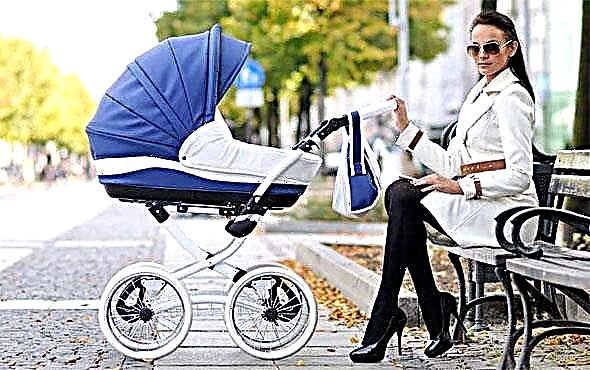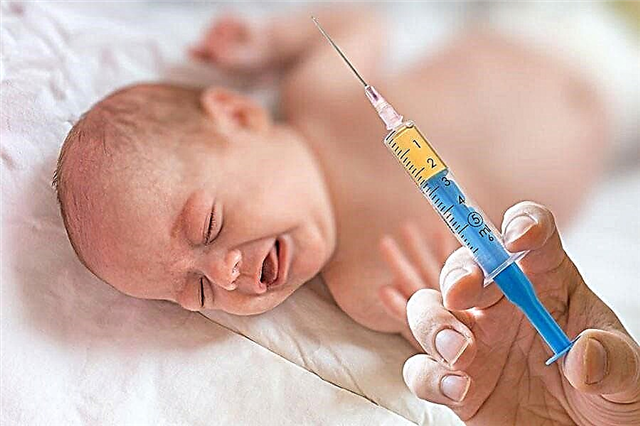The pharmaceutical market today offers antiallergic drugs for children of a wide variety of dosage forms and types. In this article we will try to understand the distinctive features, advantages and disadvantages of allergy drugs used in pediatrics.
Allergy medicines for children
Presented in the form of syrups, suspensions, drops, solutions for inhalation, tablets. It is liquid dosage forms that have become most widespread, since it is easier to give them to a very small child under 1 year old.
From allergies for children under one year old, antihistamines in drops are most often used: Fenistil or Zyrtec (from the age of 6 months).
Antihistamines for allergies for children
Histamine is a biologically active substance that is produced by mast cells of the basophil during an allergic reaction in the body. Histamine enhances the permeability of the walls of small vessels, is able to provoke bronchospasm, itching of the skin.
What Do Antihistamines Do? They block histamine receptors, stopping the course of the allergic process. There are 2 main groups of histamine receptor blockers: old and new generation. It should be noted that drugs of both groups are widely used in infants.
Old generation antihistamines against allergies have a number of undeniable advantages, which does not allow them to leave the field of application in children's practice:
- rapid onset of action;
- the presence of injection forms;
- high antiallergic activity.
 For newborns from allergies, Suprastin or Fenistil in drops are most often prescribed. These drugs are members of the older generation of antihistamines. Suprastin is a good, time-tested remedy used for all types of allergies in newborns. Children of the first months of life tolerate this medicine well.
For newborns from allergies, Suprastin or Fenistil in drops are most often prescribed. These drugs are members of the older generation of antihistamines. Suprastin is a good, time-tested remedy used for all types of allergies in newborns. Children of the first months of life tolerate this medicine well.
Antihistamines of the old generation can cause drowsiness and lethargy in a child, urinary retention and dry mouth are possible.
Antihistamines of the new generation for allergies are practically not used to treat newborns. This is due to the poor knowledge of the effect of these drugs on the body of children under one year old. From the age of 1 year, the possibilities of using these drugs expand. The new generation drugs do not have a hypnotic and sedative effect and are easily tolerated.
The main advantages of the new generation of drugs blocking histamine receptors:
- are taken once a day;
- a large selection of dosage forms - tablets, drops, syrup;
- have anti-inflammatory effects.
Allergy syrup for children
Antihistamines for allergies to a small child can be prescribed in the form of a syrup. Syrups are often sweetish in taste and have a fruity aroma.
Many babies are happy to take the medicine in the form of syrup. The most commonly prescribed syrups are Zodak, Claritin, Erius. Syrups are good if you need to take long-term medications for pollinosis, chronic urticaria.
Topical forms of antihistamines
An antihistamine for babies for various types of allergies can be prescribed in the form of gels. For an infant, Fenistil gel will help well against manifestations of food allergies in the form of a rash.

The gel is easy to use and can be applied several times a day. Fenistil gel will perfectly relieve itching. Psilo-balm is also prescribed for a baby from insect allergies. The medicine is also represented by a gel, it perfectly relieves itching and swelling in the places of insect bites in a baby.
Antiallergic drops for oral administration with an antihistamine effect
They are used in the treatment of food allergies, atopic dermatitis, urticaria in infants with an allergy to formula milk. The drops are well tolerated, can be used for polyvalent allergies, when sweet flavored syrups cannot be taken.
Antihistamine eye drops and nose drops are used for seasonal pollen allergies. In children's practice, Vibrocil, Sanarin-Anallergin, Nazol-Advance are used to treat allergic rhinitis. These are combined preparations containing both an antihistamine component and a decongensant (vasoconstrictor).
Well reduce swelling in the nose, relieve itching and sneezing. Antihistamines in the form of sprays - Allergodil, Histimet. In severe conjunctivitis with complications in the form of keratitis, it may be necessary to use drops with glucocorticosteroids (0.1% dexamethasone).
Allergy creams for children under one year old
In the first months of a baby's life, mothers often encounter various rashes on the baby's delicate skin. The manifestations of an allergic rash are best removed by creams containing glucocorticosteroids - Lokoid, Advantan.
These drugs cannot be used for food allergies in the form of a rash in an infant for a long time, specialist advice is desirable.
Side effects are observed with prolonged uncontrolled use and include skin atrophy, hypertrichosis (increased hair growth), acne.
The use of antiallergenic drugs in the form of tablets
Allergy pills are the most common form of prescribing antiallergic drugs. Antihistamines, antileukotriene drugs are produced by the industry mainly in tablet form.
Singular 4 mg chewable flavored tablets are often prescribed for allergic bronchial asthma, when stopping the reaction by suppressing the production of leukotrienes is the best solution.
 Leukotrienes are mediators synthesized from arachidonic acid in the cell. It has been found that in allergic bronchial asthma, the production of leukotrienes increases. Leukotrienes contract the muscles of the bronchi, which causes an attack of bronchial asthma in the child.
Leukotrienes are mediators synthesized from arachidonic acid in the cell. It has been found that in allergic bronchial asthma, the production of leukotrienes increases. Leukotrienes contract the muscles of the bronchi, which causes an attack of bronchial asthma in the child.
Unfortunately, it is not uncommon for children to resort to prescribing systemic glucocorticosteroids (hormones) in the form of tablets. This is required by severe cases of intractable chronic urticaria, drug allergies, therapy of severe forms of atopic dermatitis.
Prednisolone tablets are available in a dose of 5 mg, metipred - 4 mg. The drugs should be taken in the morning, according to the doctor's prescription. Changing the regimen on your own is dangerous to the health of the child.
If a child is given systemic glucocorticoids for a long time, then Itsenko-Cushing's syndrome may appear, which is characterized by mental disorders, a moon-shaped face, obesity, and increased blood pressure. In the treatment of food allergies in children under one year old, they try not to use hormones.
Solutions for inhalation and suspensions in the treatment of asthma and allergic stenosis of the larynx in children
Quite often, doctors prescribe inhalation to babies through a nebulizer.
When buying medicines for inhalation, be careful, as not all medicines are suitable for this purpose. On the label of the product there should be an indication of "solution for inhalation".
Hormones for nebulizer therapy are sold as a suspension in special nebulizers. In infants with allergies, it is advised to use children's nebulizer masks.
Inhalation gives a quick effect, the well-being of the newborn quickly improves. In case of exacerbation of bronchial asthma with symptoms of respiratory failure, let the child breathe with Berodual or Salbutamol solution.
The most common drug is Berodual inhalation solution. This name is well known to mothers whose children suffer from obstructive bronchitis and asthma. Berodual must be diluted with saline to 2 ml before starting inhalation. Suspension of Pulmicort in nebulas is not required to be diluted.
Thus, in this article we have considered all the main dosage forms used in childhood. It is clear that the choice of the drug and its dosage should be determined only by the attending physician. The correct implementation of the recommendations prescribed by the doctor depends on the parents.
With some pharmacological knowledge, it will be easier for parents to organize competent care for their baby during illness.



